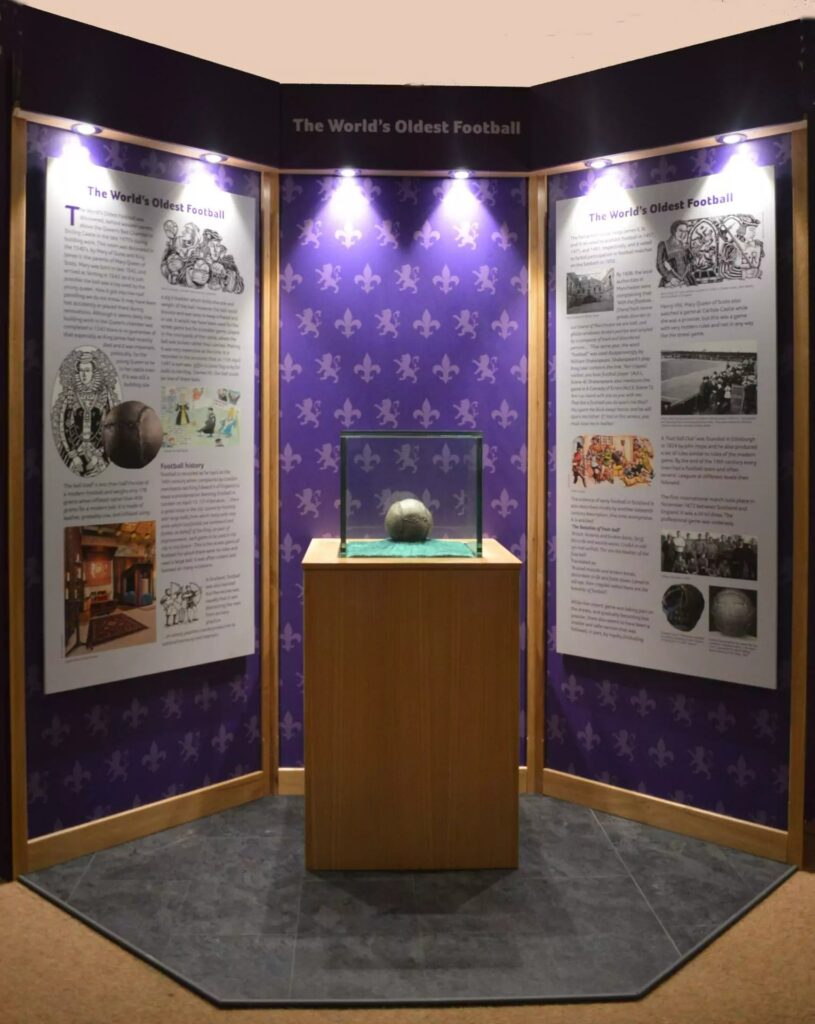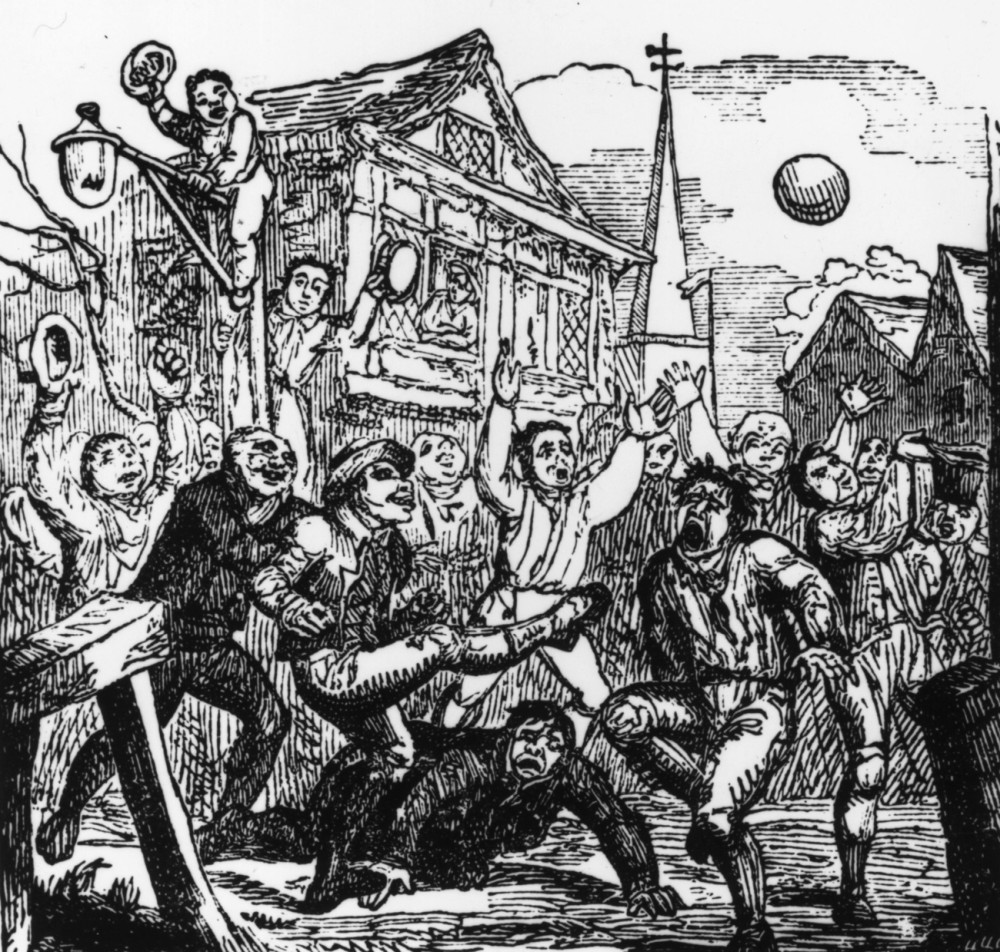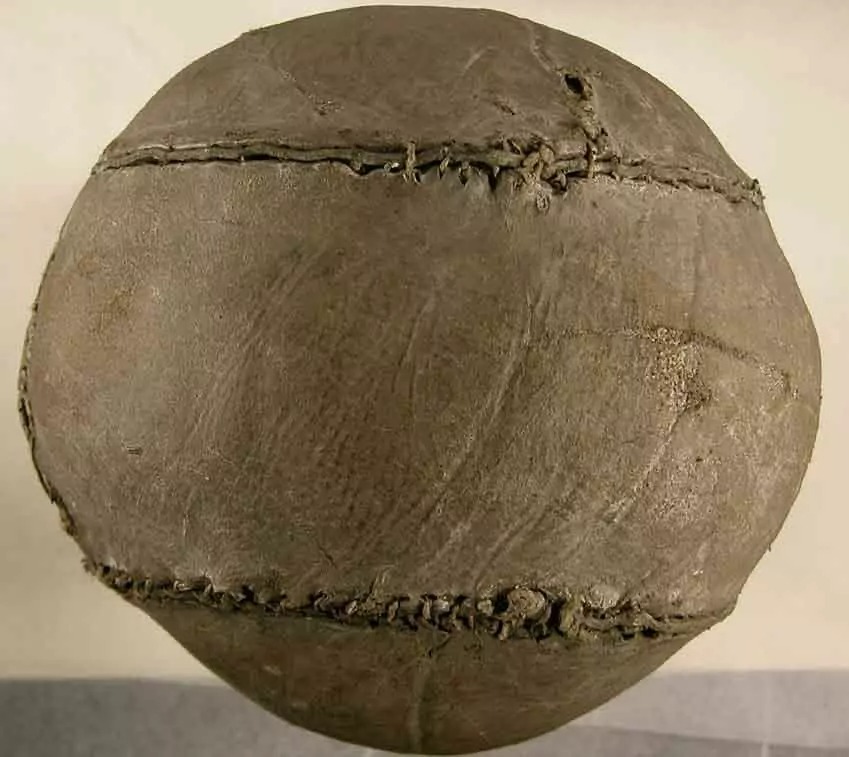
It’s almost 500 years old.

Did you know that the world’s oldest football was discovered in Stirling Castle, Scotland, UK? It was found in 1981 during enabling works in the castle, which was used by Mary, Queen of Scots, during her reign in the 16th century. The ball had been hiding lodged in the rafters of the Queen’s Chamber, and was gifted to the Stirling Smith Art Gallery and Museum.
How did it get there? Some evidence suggests that this ancient relic was either kicked to a great height and subsequently forgotten, or intentionally positioned in the rafters to serve as protection against evil spirits during James V’s reconstruction of the castle between 1537-1542.

Indeed, tests performed after the discovery confirmed that it was made some time between 1540 and 1570. The material used was cow hide, with pig’s bladder inside to inflate it. It is about half the size of a modern football and has a grey color.
According to the Guinness World Records, this is the oldest football in the world. The next oldest Scottish football is from the 18th century, according to the National Museum. But how did this ball end up in Stirling Castle and who played with it?

There is evidence that football was a popular game in Scotland as early as the 15th century. In fact, documents show that King James IV ordered a bag of “fut ballis” from Stirling in April 1547. Football was not only a game for the common people, but also for the royals and nobles who lived in castles like Stirling. Mary, Queen of Scots, who was born in 1542, was known to have an interest in sports, especially golf and football. She even recorded a game of football in her diaries while at Carlisle Castle.

However, football was not always a harmless pastime. It was often a violent and chaotic sport that involved hundreds of players and no rules. It could cause injuries, riots and even deaths. Therefore, several laws were passed to ban or discourage football, as it was seen as a threat to public order and military service. A contemporary poem called “The beauties of the foot ball” lists some of the dangers of playing football, such as broken bones, torn ligaments and even impotence.
The Bewties Of The Fute-ball
Brissit brawnis and brokin banis,
Stride, discord and waistie wanis.
Crukit in eild syne halt withal,
Thir are the bewties of the fute-ball.

So, was this ball a personal item of Mary, Queen of Scots, that she hid behind the paneling to protect herself from witchcraft, a common practice at the time? Or was it somehow lost or forgotten by someone else who played with it in the castle courtyards or gardens? We may never know for sure, but we do know that this little ball is a remarkable witness to the history of football and its evolution from a medieval sport to a global phenomenon.

Leave a Reply